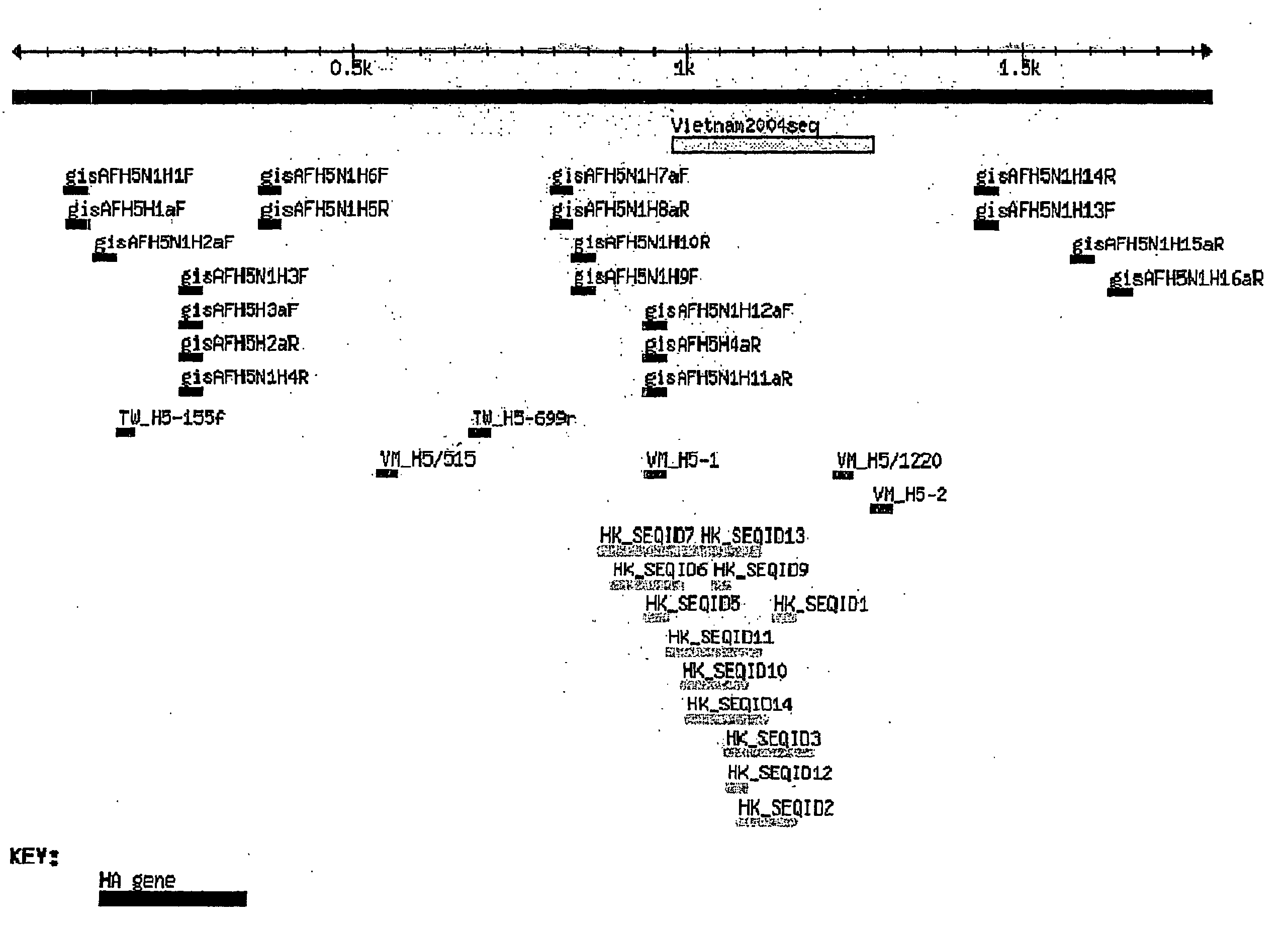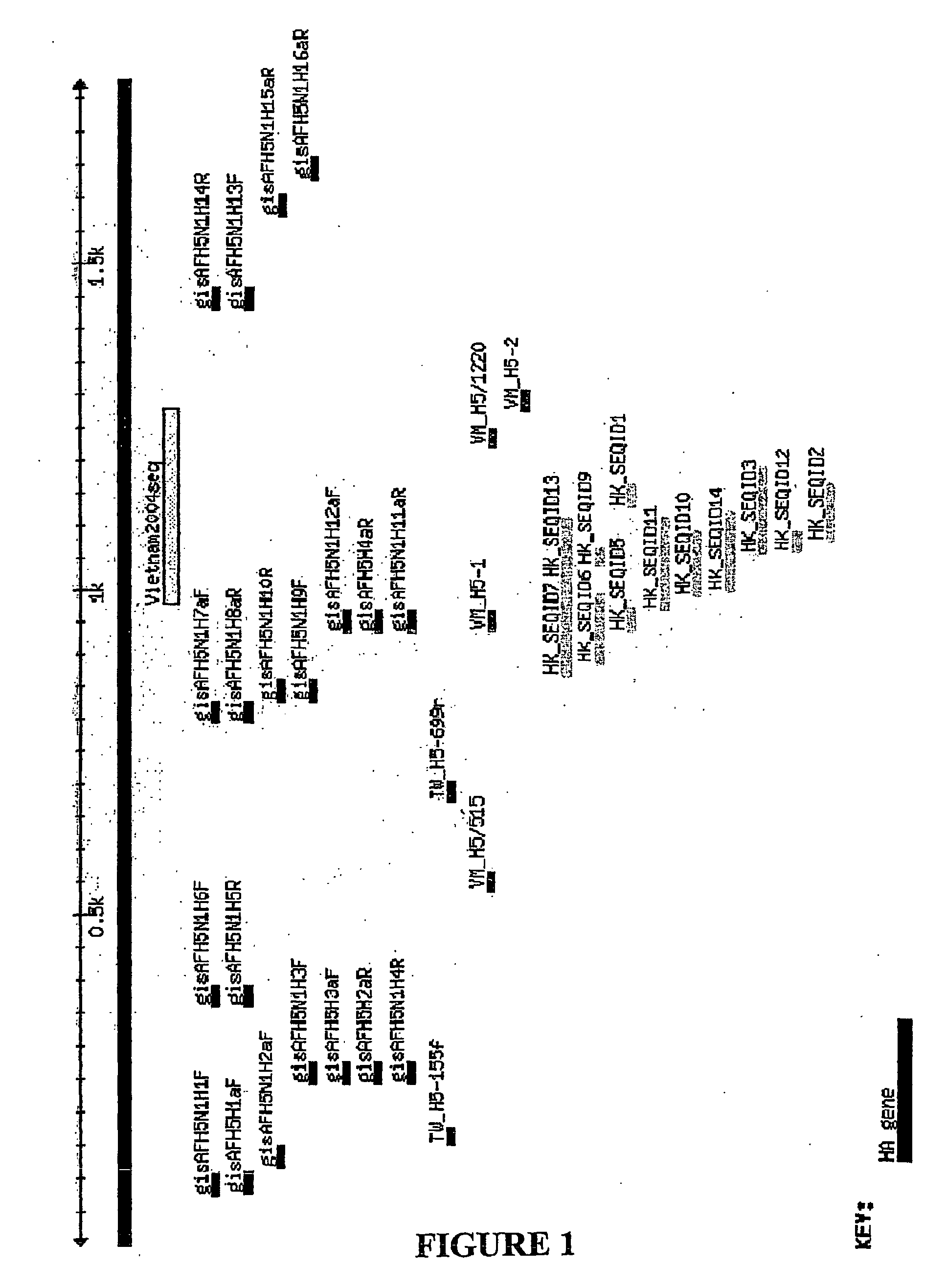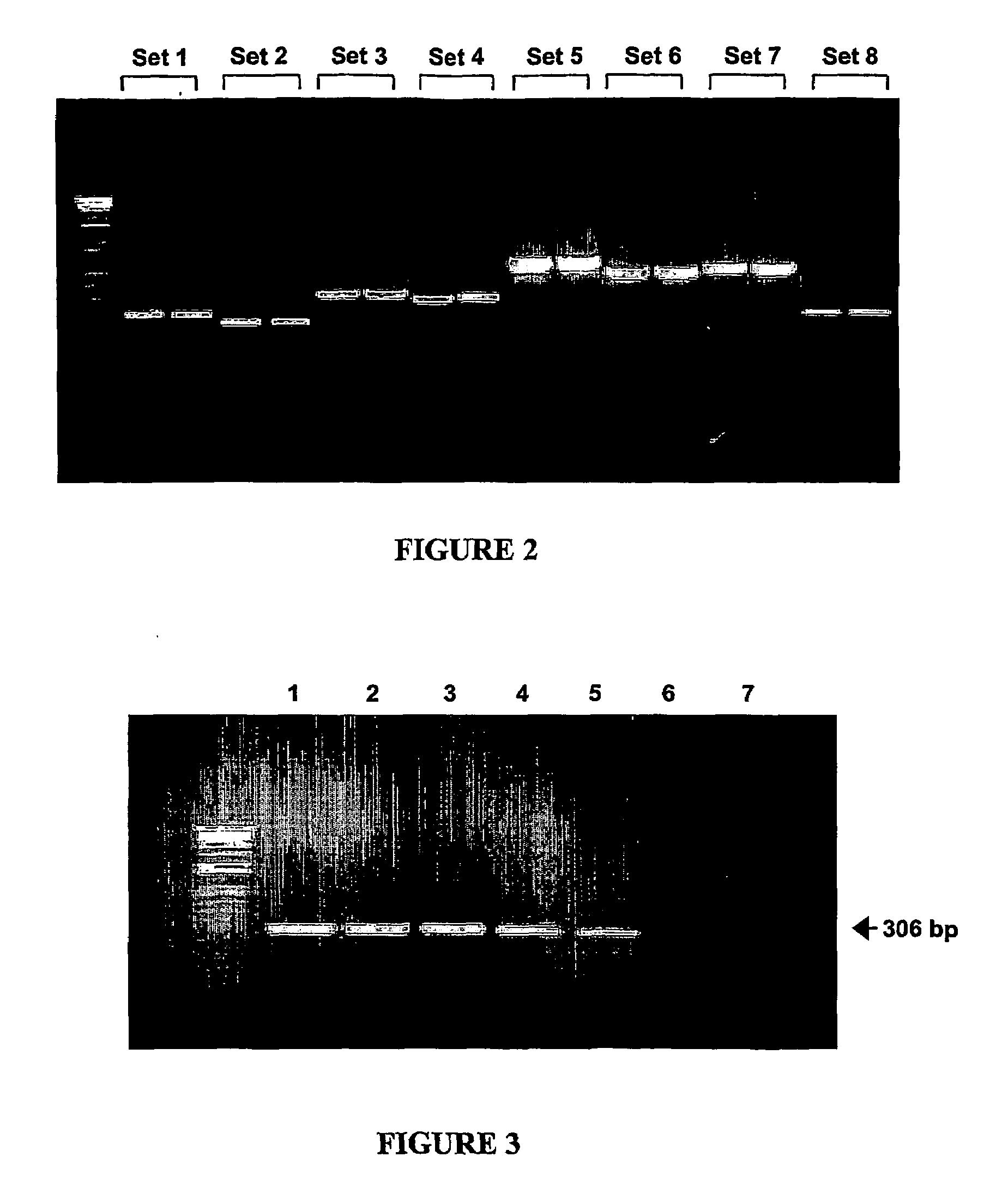Diagnostic Primers and Method for Detecting Avian Influenza Virus Subtype H5 and H5n1
a technology of avian influenza virus and primers, applied in chemical libraries, combinational chemistry, sugar derivatives, etc., can solve the problems of high mortality rate of affected poultry populations, massive culling of millions of poultry, and severe economic repercussions, and achieves rapid, specific and sensitive effects
- Summary
- Abstract
- Description
- Claims
- Application Information
AI Technical Summary
Benefits of technology
Problems solved by technology
Method used
Image
Examples
example 1
Detection of Avian Influenza Virus H5 and H5N1 Using Gel-Based Detection Platform
[0145]The following is a general protocol for detection of avian influenza virus subtype H5 or H5N1.
[0146]Generally, RNA is extracted from samples according to the manufacturer's instructions, using either TRIzol™ or RNA extraction kits (Qiagen).
[0147]The first-strand cDNA synthesis is performed on extracted RNA using the relevant reverse primer(s) (2 μl of 10 μM stock) in a 20 μl reaction volume. A first round PCR reaction is set up using 2.5 μl of the CDNA reaction, containing cDNA product as template with relevant forward and reverse primer(s) (1.25 μl total volume for each of forward and reverse) in a 25 μl reaction volume. The PCR conditions are set up as follows: incubation at 94° C. for 2 min; 35 cycles of 94° C. for 10 sec, 50° C. for 30 sec, 72° C. for 1 min; followed by an incubation at 72° C. for 7 min. A second round of PCR is performed using the product of the first round PCR (2.5 μl) as te...
example 2
Detection of Avian Influenza Virus H5 and H5N1 Using Real-Time RT-PCR Detection Platform
[0152]The following reactions are performed in a LightCycler™ instrument.
[0153]The reaction master mixture is prepared on ice by mixing the following reagents in order, to a volume of 20 μl: water (volume adjusted as necessary), 50 mM manganese acetate (1.3 μl), ProbeNPrimer mix containing forward primer and reverse primer to a final concentration of 0.2 to 1 μM and fluorescently labelled probes (2.6 μl ), LightCycler RNA Master Hybridization Probes (7.5 μl), which contains buffer, nucleotides and enzyme.
[0154]The reactions are transferred to glass capillary tubes suitable for use in the LightCycler™. 5 μl of extracted RNA template is added to each reaction and briefly centrifuged. The RT-PCR reactions are run using the following programs (Tables 5-8):
TABLE 5Program 1-Reverse TranscriptionCycle Program DataValueCycles1Analysis ModeNoneTemperature TargetsSegment 1Target T° C.61Incubation time20 mi...
example 3
Detection of Avian Influenza Virus H5N1 Using Real-Time RT-PCR with Various Primer Sets
[0155]Real time PCR reactions were performed using the 8 primer sets described in Example 2 above. The reactions were performed using SYBR green fluorescent detection kit, in accordance with standard protocols and commercially available reagent kits (Roche). FIG. 6 displays the amplification products obtained for the reactions performed with each of the 8 primer sets as visualized on a 1.5% agarose gel stained with ethidium bromide.
[0156]To confirm the sensitivity of the primers using the real time PCR protocol, amplification curves were generated to monitor the production of amplification product. Results are shown in FIGS. 7 to 14 for each of primer sets 1 to 8, respectively. Melting curves of the amplified product were performed at the end of the amplification reaction. Generally, specific amplification products will have a higher melting temperature than non-specific products, and the melting ...
PUM
| Property | Measurement | Unit |
|---|---|---|
| thermal melting point | aaaaa | aaaaa |
| volume | aaaaa | aaaaa |
| volume | aaaaa | aaaaa |
Abstract
Description
Claims
Application Information
 Login to View More
Login to View More - R&D
- Intellectual Property
- Life Sciences
- Materials
- Tech Scout
- Unparalleled Data Quality
- Higher Quality Content
- 60% Fewer Hallucinations
Browse by: Latest US Patents, China's latest patents, Technical Efficacy Thesaurus, Application Domain, Technology Topic, Popular Technical Reports.
© 2025 PatSnap. All rights reserved.Legal|Privacy policy|Modern Slavery Act Transparency Statement|Sitemap|About US| Contact US: help@patsnap.com



